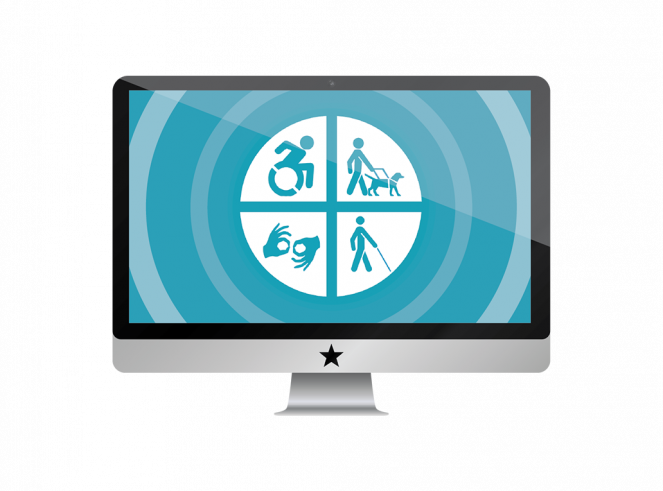Taking a vital step toward website accessibility
Woody Estep, Municode
The Internet has dramatically changed the way local governments engage their residents. Many local government websites offer a quick and convenient way of filing tax returns, paying bills, renewing licenses, signing up for programs, applying for permits, submitting job applications, or performing a wide variety of other services. As a result, many residents can easily access this information seven days a week, 24 hours a day directly from the website without visiting a physical location. Given this reality, it is vital for governments to ensure their websites and web content is accessible for all residents.
According to the 2010 U.S. Census, 19% of the 300 million U.S. civilian population has a disability that is 57 million people. Beyond individuals with a permanent disability, website accessibility also helps the older population with changing abilities due to aging, the younger population at varying levels of cognitive skills, and those with temporary disabilities from an injury. Improving website accessibility is simply the right thing to do.
The website accessibility guidelines may seem extensive and daunting, but recent decisions have simplified and unified guidelines making it much easier to decipher. In January of 2017, the U.S. Access Board published a final rule updating accessibility requirements for information and communication technology covered by the ADA, Section 508 of the Rehabilitation Act, and Section 255 of the Communications Act. The final rule adopts international guidelines of the World Wide Web Consortium (W3C), the international standards organization of the Internet. This synchronization with international guidelines encourages uniformity and will improve website accessibility worldwide. The WCAG 2.1 Level AA guidelines are now the standard for ADA compliance.
With the recent spike in website accessibility lawsuits, it is important that your local government start working towards website accessibility before there is a worst-case scenario, involving a demand letter being issued to you about non-compliance. If a demand letter is received, it is imperative that you contact counsel that has experience in these types of cases.
Since making a website accessible has no considerable impact on its appearance, taking steps toward compliance does not have to be difficult. If you have not done so already, perform an accessibility scan of your webpages. Then immediately add an accessibility statement to give an update as to how and when your accessibility issues are going to be resolved. This lets users know that you are aware of the accessibility barriers and are committed to resolving them.
Once your immediate action plan is in place to ensure your website accessibility, it is important to develop an ongoing strategy for future web content. This is necessary for in-house staff, as well as contractors, to have an awareness of proper development going forward. If done correctly, building an ADA compliance strategy can be easy and will help ensure that you and your team effectively connect with your entire community.
Here are a few links which may aid your staff in the development and maintenance of your website:
ADA Compliance Resources
The Contrast Ratio Tool: http://contrast-ratio.com/
Screen reader: https://chrome.google.com/webstore/detail/chromevox/kgejglhpjiefppelpmlj...
PDF Accessibility Checker and remediation services: https://commonlook.com/accessibility-software/commonlook-pdf-validator/
Planning & Managing: https://www.w3.org/WAI/planning/#planning
Readability Resources
Readability Test Tool: https://www.online-utility.org/english/readability_test_and_improve.jsp
What is Understandable Content? https://www.w3.org/WAI/perspectives/understandable
Cloze Test Procedure: http://www.readabilityformulas.com/the-cloze-test-readability-assessment...
Tips on Writing for Web Accessibility: https://www.w3.org/WAI/gettingstarted/tips/writing.html
Click here to learn more about how Municode can help design you a website with local government and ADA accessibility in mind.

